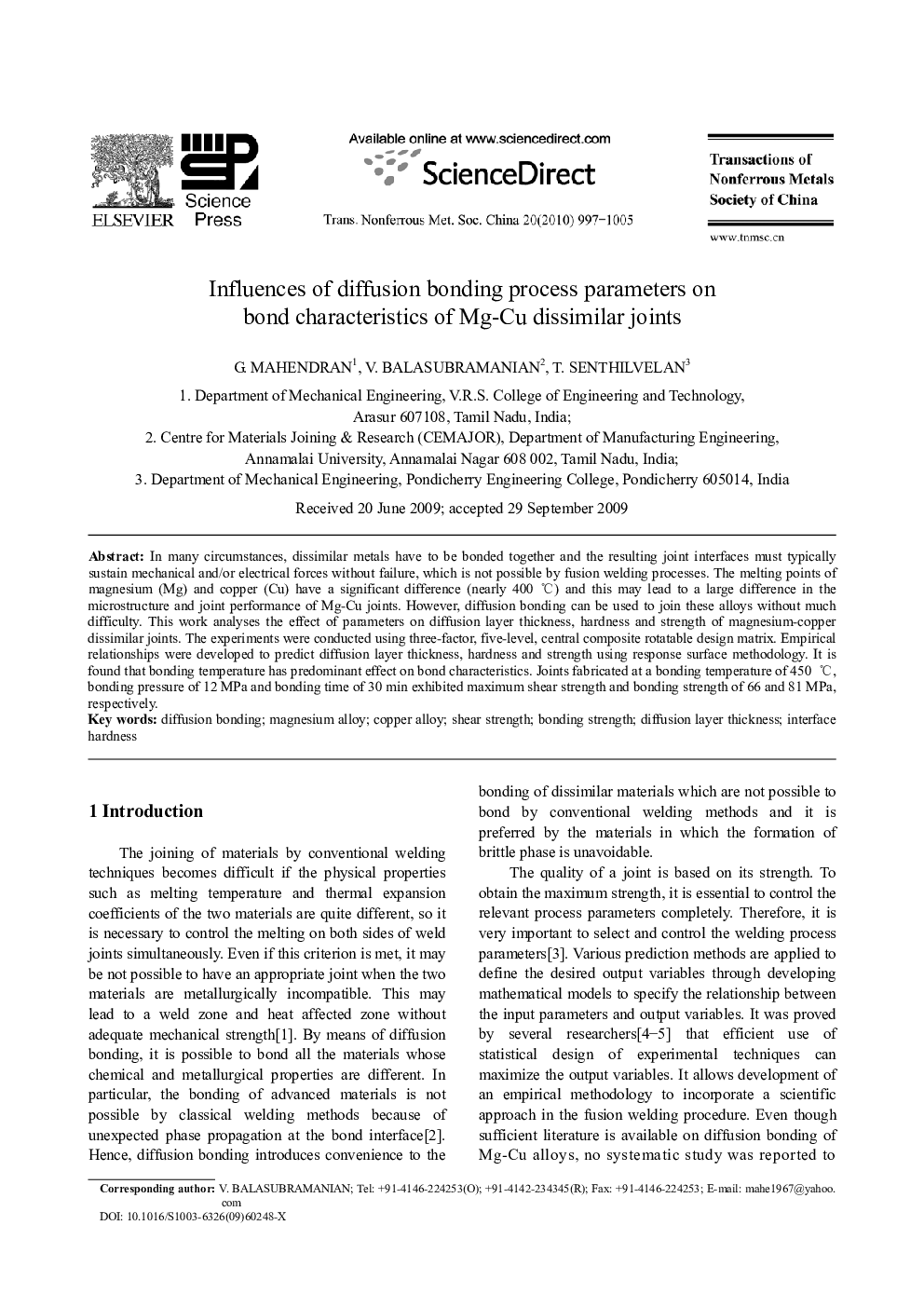| Article ID | Journal | Published Year | Pages | File Type |
|---|---|---|---|---|
| 1639047 | Transactions of Nonferrous Metals Society of China | 2010 | 9 Pages |
In many circumstances, dissimilar metals have to be bonded together and the resulting joint interfaces must typically sustain mechanical and/or electrical forces without failure, which is not possible by fusion welding processes. The melting points of magnesium (Mg) and copper (Cu) have a significant difference (nearly 400 °C) and this may lead to a large difference in the microstructure and joint performance of Mg-Cu joints. However, diffusion bonding can be used to join these alloys without much difficulty. This work analyses the effect of parameters on diffusion layer thickness, hardness and strength of magnesium-copper dissimilar joints. The experiments were conducted using three-factor, five-level, central composite rotatable design matrix. Empirical relationships were developed to predict diffusion layer thickness, hardness and strength using response surface methodology. It is found that bonding temperature has predominant effect on bond characteristics. Joints fabricated at a bonding temperature of 450 °C, bonding pressure of 12 MPa and bonding time of 30 min exhibited maximum shear strength and bonding strength of 66 and 81 MPa, respectively.
